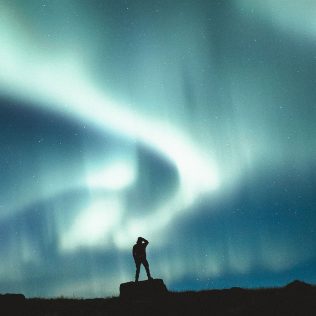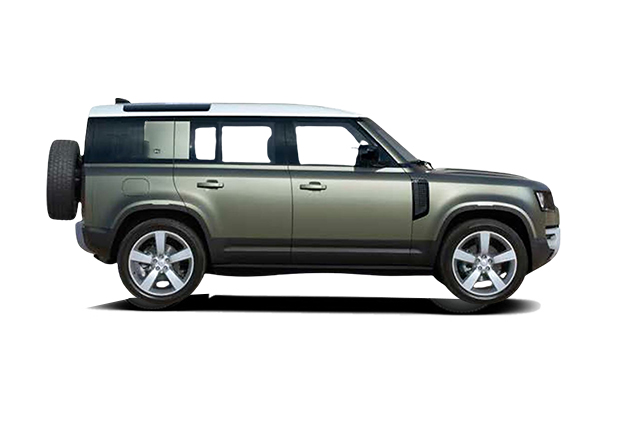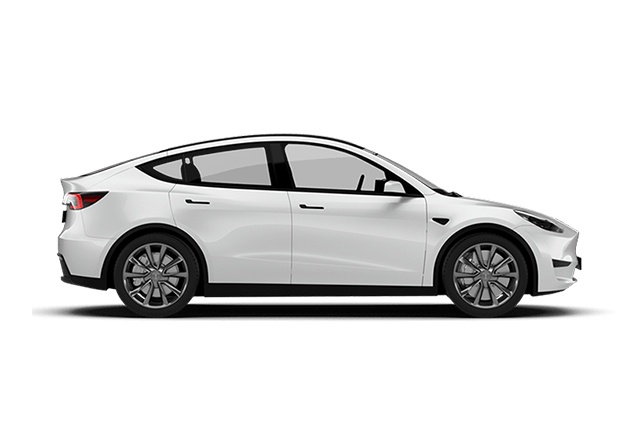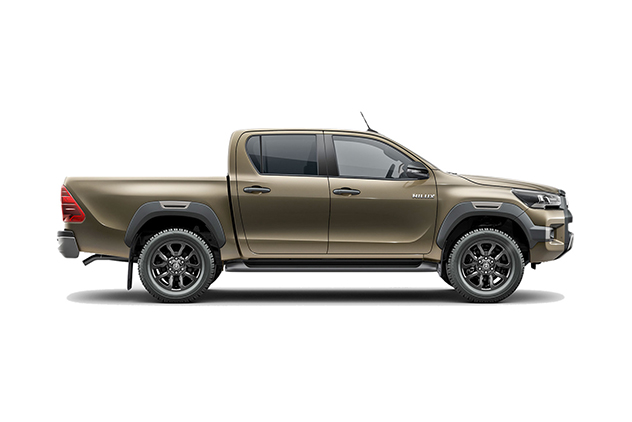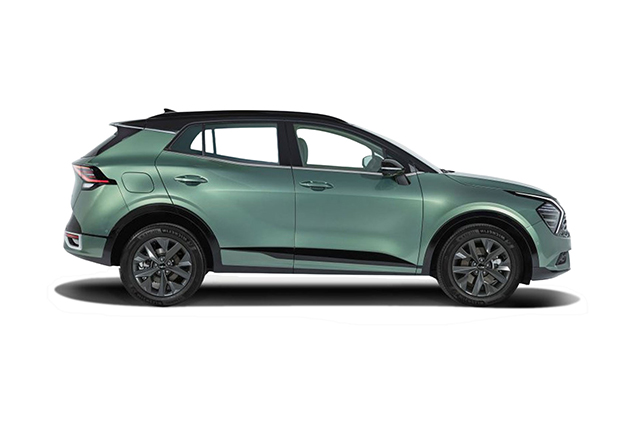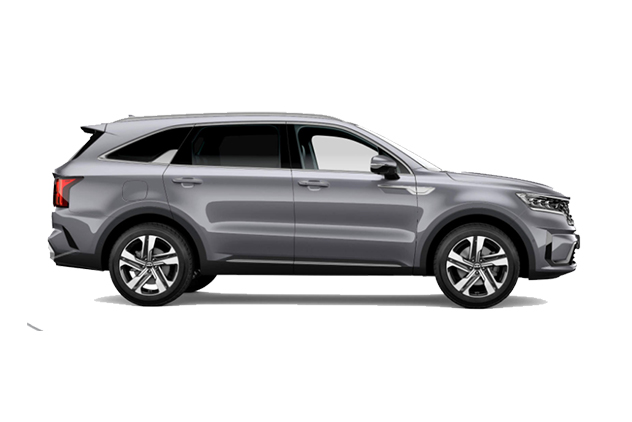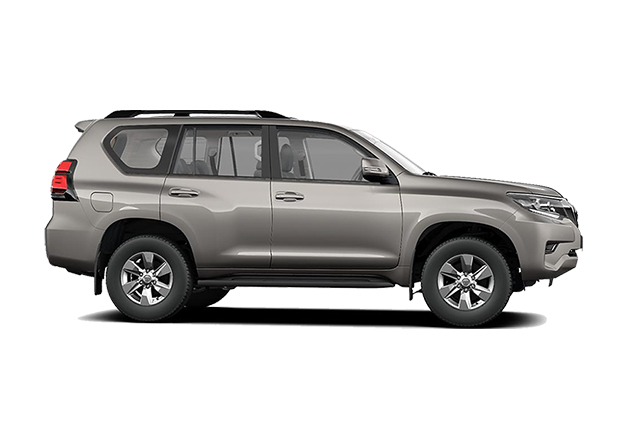Are the northern lights in Iceland? The short answer is YES if you visit Iceland during the northern light season (between September and April every year).
With such a long aurora season every year, see the northern lights in Iceland had became one of the top reasons visitors travel to Iceland. But this natural phenomenon isn’t visible as often as you might think. Visit at the wrong time of year, and you’re unlikely to catch a glimpse.
But by visiting at the right time, you’ll drastically increase your odds. While it’s never guaranteed that you’ll see the northern lights on your trip to Iceland, understanding the best time to see northern lights in Iceland, and where to see the northern lights in Iceland will give you a good chance to experience this once-in-a-lifetime opportunity.
In this article, you’ll learn everything you need to know about seeing the northern lights in Iceland, including how to incorporate it into an Iceland self-drive tour.
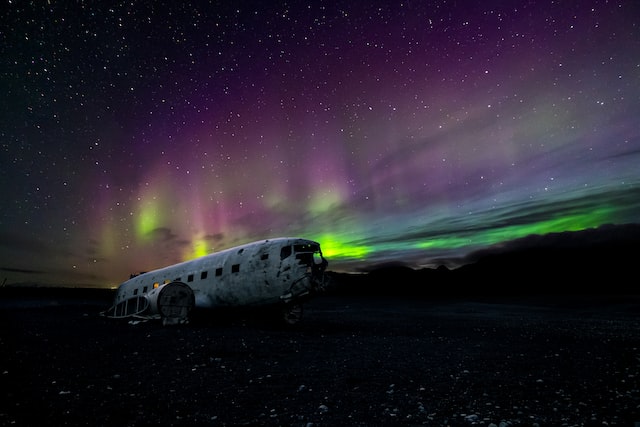
Table of content
- The best time to see northern lights in Iceland: where to start
- When is the best time to see northern lights in Iceland?
- How does it look when the northern lights are above you?
- What is the best car to rent for a northern light self-drive trip in Iceland?
- How to read the northern light forecast
- Can you see the northern lights during the summer?
- Where can you see the northern lights in Iceland?
- Can you see the northern lights from Reykjavik?
- How to maximize your chances of seeing the northern lights
- Safety tips for an Iceland self-drive northern light tour
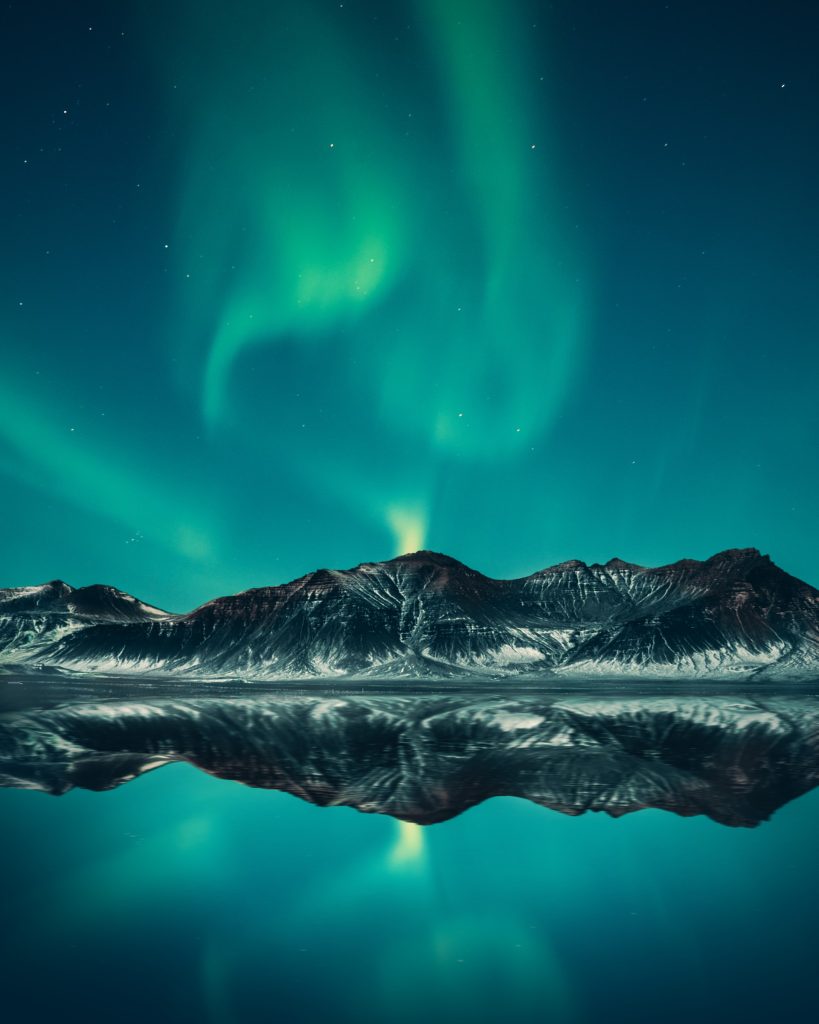
The best month to see northern lights in Iceland: is between September and April. But, where to start
Imagine the entire sky lighting up in a massive dance, bursting out in a green flame above you, swirling around your head, and waving in colour.
You don’t know where to look. It is everywhere. And the night is bright. Even if just for a moment.
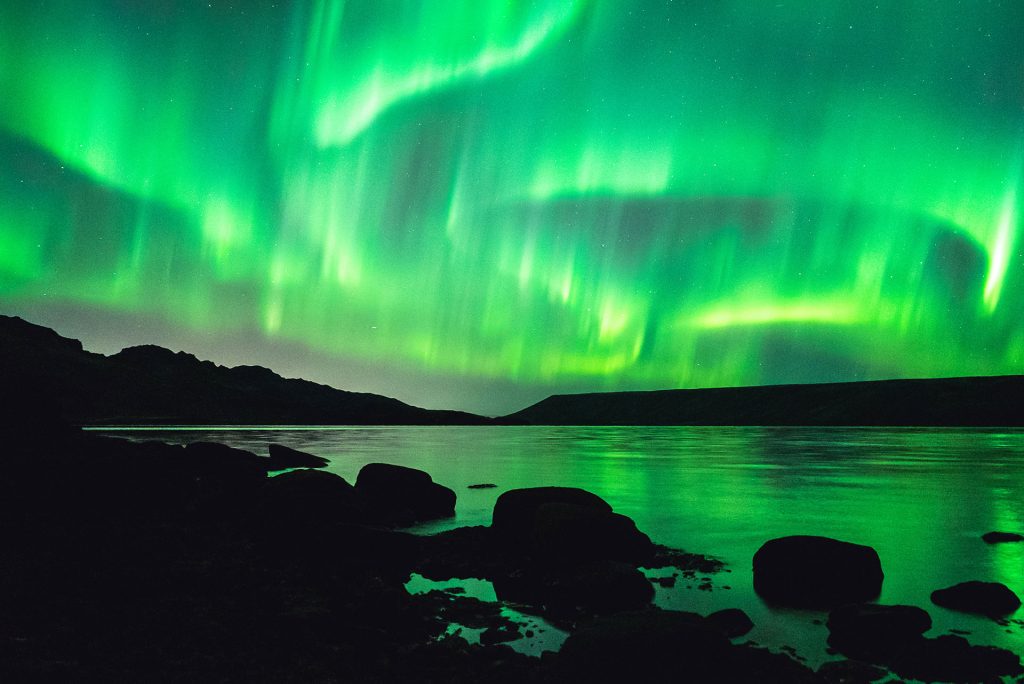
Many come to Iceland to experience the great natural phenomenon of the Aurora Borealis, also called the northern lights. Still, even though it can fill the whole sky, it’s easily missed. Finding the northern lights isn’t hard if they are out, but you have to have luck, patience, dedication, warm clothing, and more luck.
The greatest way to increase this chance of catching the dancing lights in the sky is by knowing the best time to see northern lights in Iceland, and the most likely places to view them from. So here is everything you need to know about the northern lights.
When is northern lights in Iceland? When is the best time to see the northern lights?
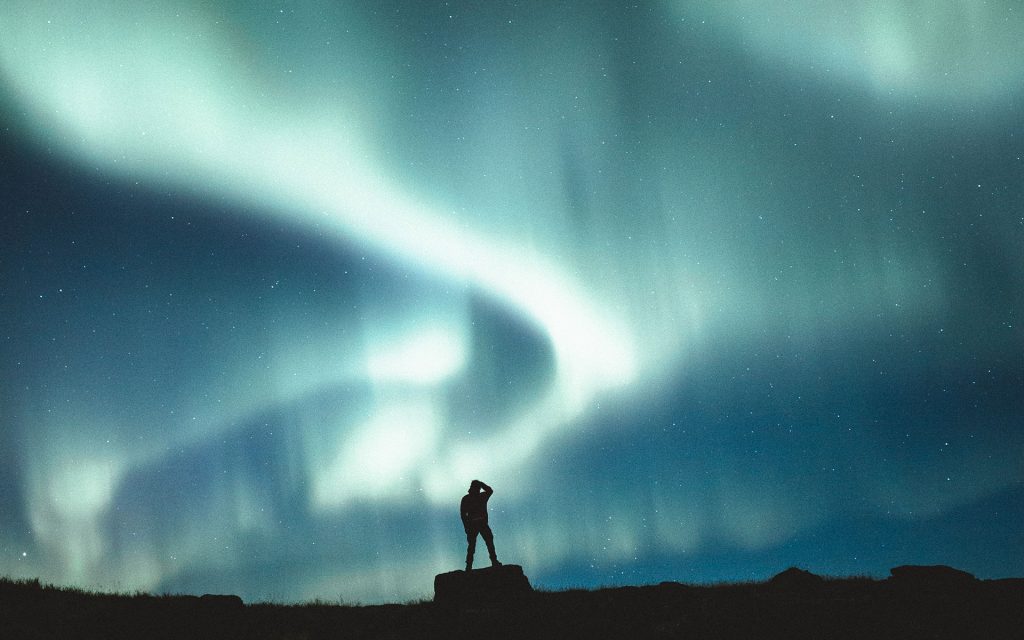
The best time to see northern lights in Iceland is between the months of September and April, when Iceland has its darkest nights.
The northern lights, just like stars, can only be seen when it’s dark outside. And the darker it is, the better. But it doesn’t always get dark in Iceland. In the summer season, Iceland has what is called the midnight sun, meaning that even in the middle of the night, the sun is still visible.
In the middle of winter, from November to February, Iceland has the least amount of daylight. In January, some days only have 4 and a half hours of daylight. That means you have almost 20 hours of darkness, which increases your odds of seeing the northern lights drastically.
That said, the winter months are also the most cloudy, which can inhibit visibility. The perfect formula for seeing the northern lights is a clear, dark night in the middle of winter, on a new moon. The brightness of the moon can also block some visibility of the northern lights, so you’re less likely to see them with a full moon.
Even still, the northern lights are dancing all year long, so even if you’re not visiting in the middle of the winter, you can still get lucky!
How does it look when the northern lights are above you?
What is the best car to rent for a northern light self-drive trip in Iceland?
Before choosing the best rental car for a self-drive trip to see the northern lights, there are a few things about the Icelandic road conditions, the weather and driving conditions you need to know. If you’re travelling to Iceland specifically to see the northern lights, then we recommend visiting in the winter. But winter driving comes with some added challenges, so here are some things to keep in mind:
- There are NO street lights when you are out of the urban areas, which means you can expect to be driving in complete darkness if you are hunting for the northern lights in Iceland.
- The Icelandic weather changes rapidly, especially in the winter months. Unexpected storms, heavy snow, and low visibility can occur at any time, regardless of where you are in the country.
- The roads, including the main roads like Route 1 Ring Road or those in the capital of Iceland, Reykjavik, will be icy, slippery and snowy, making them difficult to drive on.
- Temporary road closures are very common when lousy weather hits Iceland.
Because of these factors, you’ll want to rent a vehicle that can handle winter conditions effectively and safely. That’s why we always recommend you rent a robust 4WD vehicle for your Iceland self-drive trip in the winter.
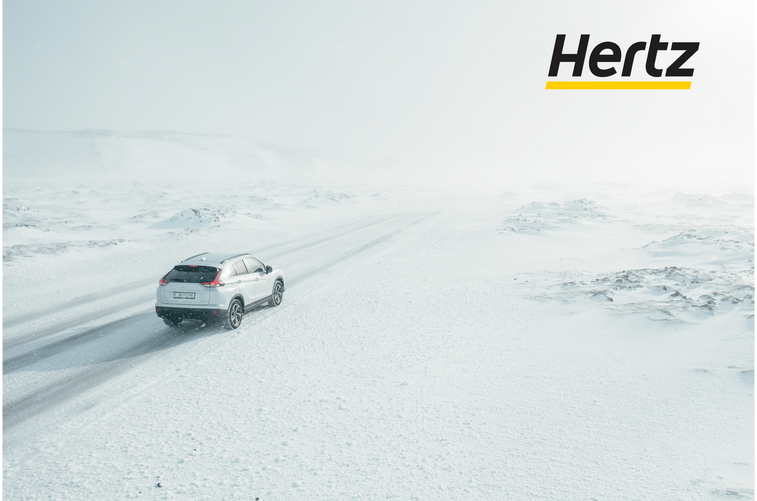
How to read the northern light forecast
The sky can be completely black one minute and lit up with beautiful green lights the next. But is there any way to predict the best time to see the northern lights in Iceland? Luckily, there are good weather forecast resources like vedur.is, and Aurora apps like “Hello Aurora” to help you determine when you will have the best chance of seeing the northern lights.
But if you are unsure how to read the forecasts, you can always book a specific northern lights tour. Knowledgeable guides head out every evening when there is the best chance of seeing the auroras since they know when and where it’s most likely to be visible. That said, there are never guarantees.
Here is an example of the Vedur Aurora forecast, plus some information on how to read and understand the forecast :
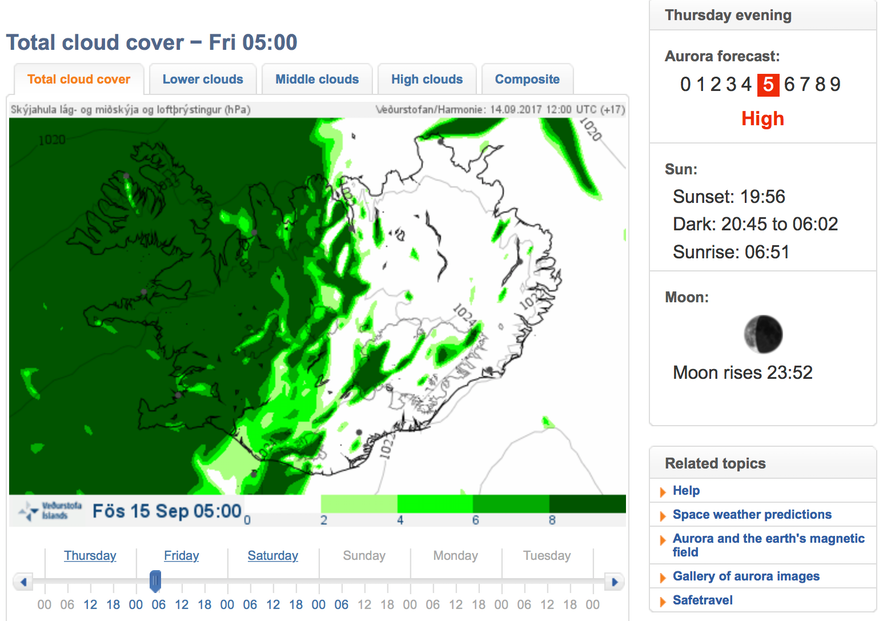
You can find all the information that you need on this page to help you choose the best time to see the northern lights in Iceland and the best spot.
On the right-hand side of this map, you can see:
- The likelihood of seeing the northern lights by date and time. The higher the number on the scale, the higher the chances you’ll see the northern lights.
- The time of the sunrise and sunset, plus hours of darkness that day, and moonrise time. During the ‘dark’ period, the chances of visibility are highest.
On the Iceland map, you can see the green and white parts. They represent the cloud movement and cloud coverage of Iceland:
- The GREEN represents the area covered by heavy clouds, which means those green areas will have the lowest possibility of seeing the aurora. The deeper the green, the thicker the cloud cover.
- The WHITE, on the other hand, represents the area with clear skies, which means you will have a better chance of seeing the aurora in those areas.
A little extra tip for you: we never recommend planning a trip to Iceland with the sole purpose of seeing the northern lights because this country has so much other beauty to offer. Instead, plan to visit some of Iceland’s incredible attractions, like the glaciers, hot springs and black sand beaches, with the added bonus that the northern lights could show up on your trip.
Can you see the northern lights during the summer?
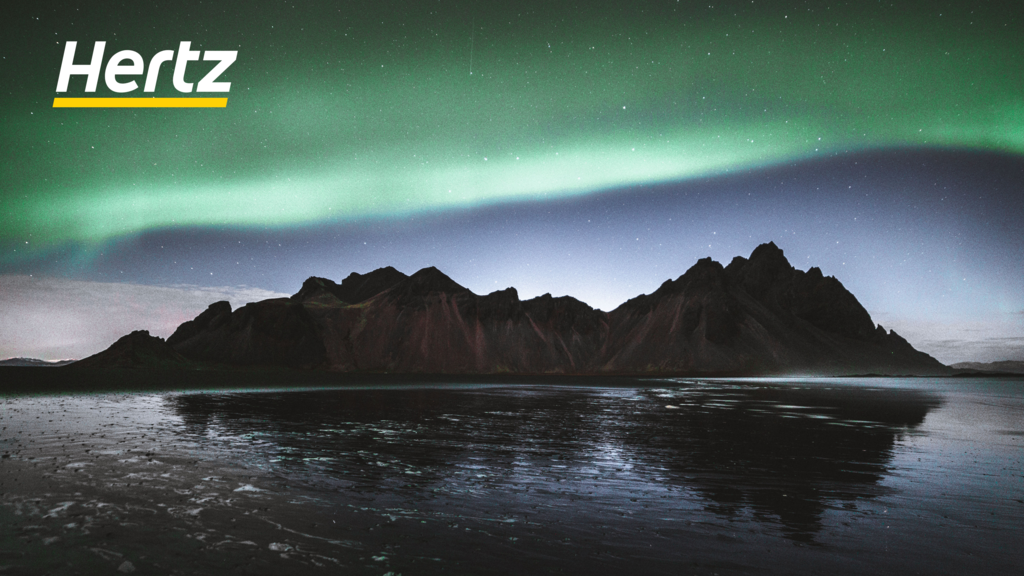
The northern lights could be dancing overhead at any time of year, and at any time of day. But the reality is that they can’t overpower the brightness of our sun. No matter how spectacular they might be, you can’t see northern lights when it’s bright outside, and in summer, Iceland doesn’t get dark. Between May and August, the sun does set, but there is never complete darkness, meaning that neither stars nor northern lights can be seen during these months.
Where can you see the northern lights in Iceland?
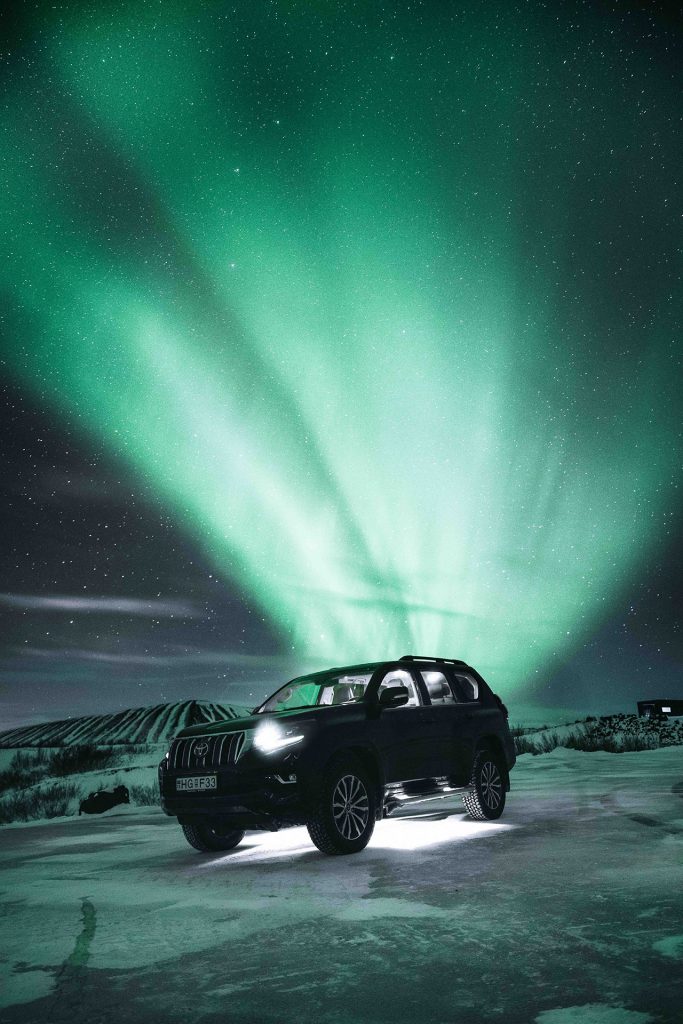
While the northern lights can be seen from anywhere in Iceland, there are regions where you’re more likely to spot them. You want to get away from the capital of Reykjavik, and any other sources of light pollution that could block out the northern lights. The darker, and more isolated the area, the better. There are a few regions of Iceland where you’ll have the best chances of seeing the northern lights.
The black sand beaches of South Iceland provide the perfect grounds to observe the northern lights. Not only will you have no light pollution, but the blackness of the water and the beach at night means there is nothing to distract your eyes from the light show!
Even more spectacular is viewing the northern lights from the Jökulsárlón glacier lagoon, and watching as the lights reflect against the ice of the glaciers. The lagoon is located just up the road from Vik, so you could try your luck at the beaches and the lagoon and have the potential to see both! The biggest bonus of hunting for the northern lights in South Iceland is that the area is easily accessible year-round and only a few hours from Reykjavik.
It is also possible to view the northern lights from the more remote areas of Iceland, including the Westfjords and North Iceland or the highlands. But it’s worth noting that during the winter, the fjords can be challenging to navigate and drive through, with roadways sometimes being closed due to poor weather. The highlands are almost always closed during the winter months, with Iceland’s F-roads being inaccessible. So only plan to visit this area if you’re coming to Iceland between spring and fall.
Can you see the northern lights from Reykjavik?
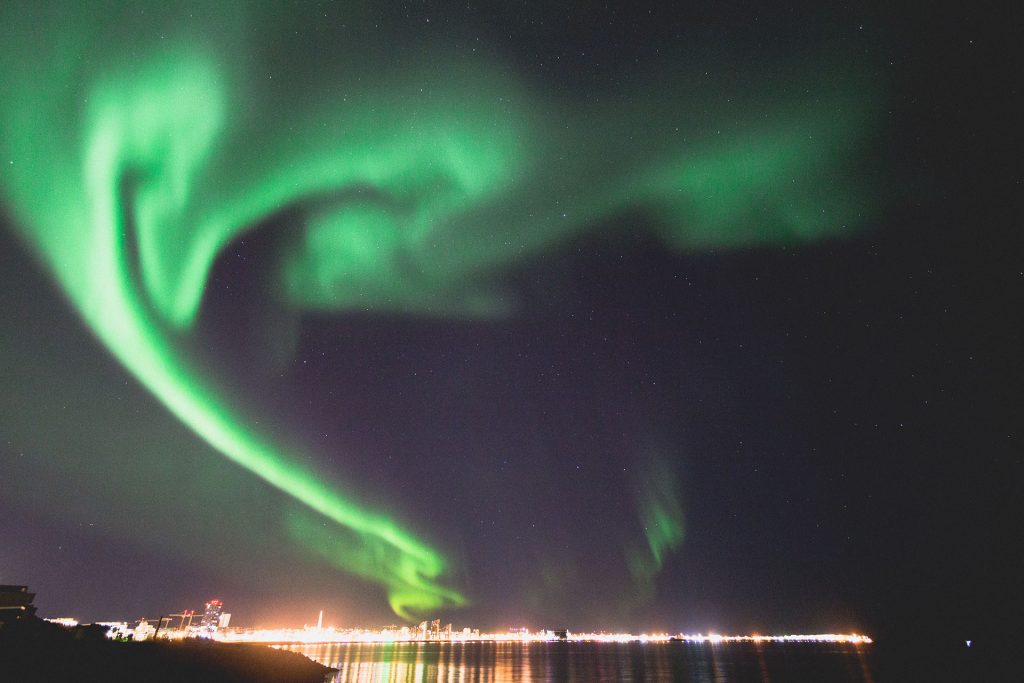
It is possible to see the northern lights from Reykjavik. That said, the northern lights are weaker when there is a lot of light pollution around, and in the city, there’s a lot of that. Still, if the northern lights are strong, and the night is very clear, then you may still see them from the capital. Another big issue is that there are buildings everywhere, and if the northern lights are not directly above you, they will be hidden by the tall structures.
The best thing to do if you are in the city and the Aurora forecast is good is to go down to the northern shore of the city, where you have a clear view of the northern sky. But for the full experience, we recommend taking a drive out to an open area in nature with fewer buildings and lights, which can be reached in as little as 20 minutes from downtown.
How to maximize your chances of seeing the northern lights
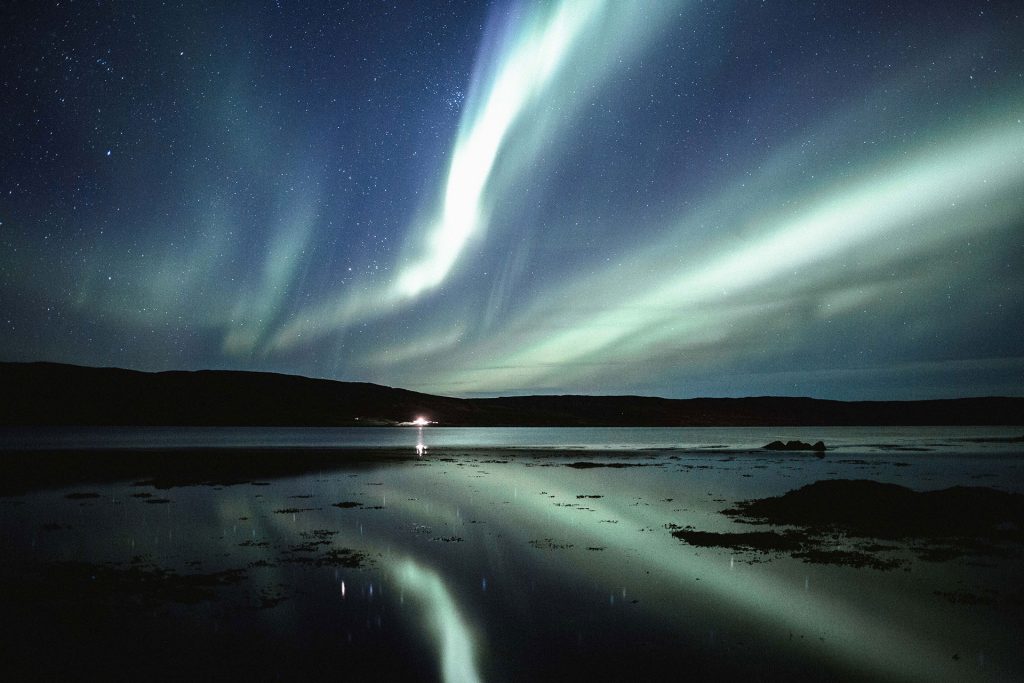
Knowing where to go, how to read the weather forecast and the best time to see northern lights in Iceland will definitely boost your chances of seeing the northern lights. But we have a few other useful tips on how to best see the northern lights.
1. ALWAYS wear warm clothes
Winter nights with clear skies can get really cold, and the warmer you are, the longer you can comfortably stay outside and wait for the northern lights to appear. To keep yourself warm, wearing multiple layers is essential. Here are some of our suggestions for what to wear to stay warm and comfortable on your hunt for the northern lights:
- Windproof and waterproof outer shell/jacket
- Thermal top and pants
- Fleece pullover and fleece-lined leggings for layering
- Wool sweater
- Waterproof outer pants
- Waterproof hiking boots
- Crampons (if needed)
Read full packing list for your Iceland self-drive road trip.
2. Drive away from artificial lights if possible
While you can walk out of your Airbnb or hotel in Reykjavik and stare at the sky for 20 minutes, chances are you’re not going to see the northern lights. Plus, it gets boring really fast. Instead, driving away from the artificial lights and making an adventure of finding the lights is much more effective and fun.
3. Stay longer if the weather allows
There is no recommended timeframe for catching a glimpse of the northern lights, but the more time you have to spend in Iceland, the more likely you are to see them.
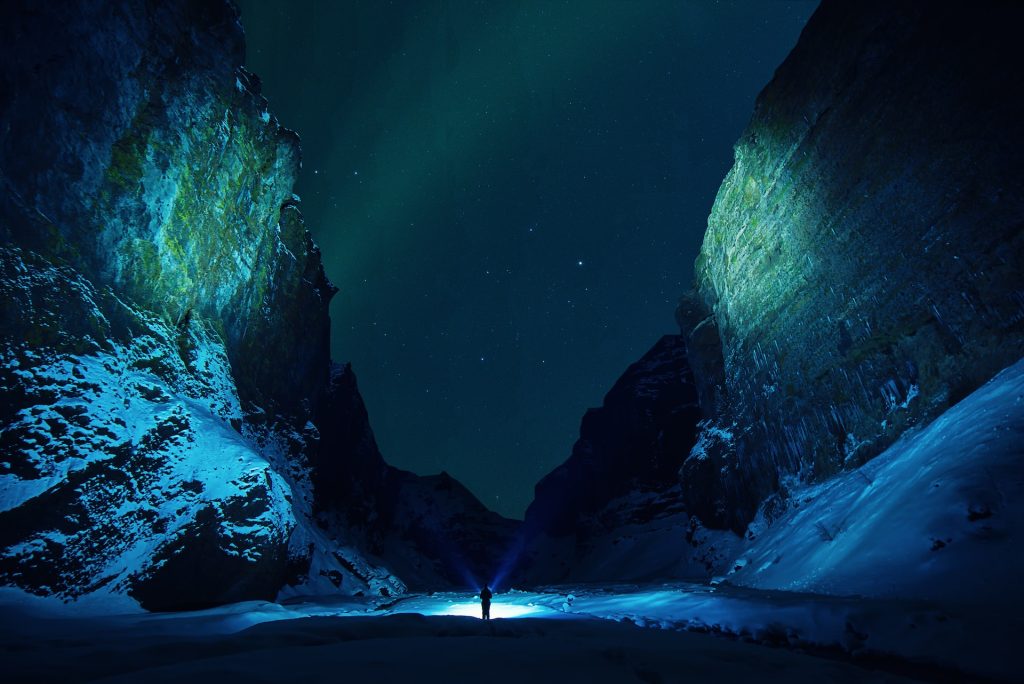
4. A ‘buddy system’ might help
The more eyes are on the sky, the higher the chance is that someone is going to catch the lights when they are out. Countryside hotels often have a call service, where the reception will call your room phone if the northern lights show up during the night. If this is not offered, you can team up with other hotel guests or friends to take turns going outside and frequently check if there is any activity. The longer someone stays up looking through the night, the better.
5. Go further north if you are a VERY snow-experienced driver
The farther north you go in Iceland, the more isolated you’ll get, and that means less light pollution. On top of that, northern areas of the country statistically have clearer skies with less cloud cover, and it stays darker for longer. That said, during the winter, the roads of North Iceland are more challenging than the well-maintained Ring Road. So make sure you have a driver who is comfortable driving in winter conditions which make the roads icy and snowy.
Safety driving and travel tips when visiting Iceland for a self-drive winter northern light tour
The last thing it’s important to discuss about your Iceland self-drive tour to see the northern lights is safety. Since you’re likely going to be dealing with the variable weather conditions of the Icelandic winter and the more challenging road conditions, there are a few important things to keep in mind to keep your group safe on the roads:
- Check the daily weather forecast on vedur.is to make sure there are no storm or bad weather warnings before hitting the roads
- Check the daily road conditions on road.is to make sure roads are open and safe to drive.
- Don’t underestimate the variability of the road conditions in Iceland. If you’re not a confident driver, then you may want to consider joining a local tour to see the northern lights and using your rental car for the other days of your trip.
- Jot down Iceland’s emergency number – 112
- Never drive if you feel tired
- Don’t plan to drive long stretches at once. Keep your itinerary relaxed with plenty of buffer time.
Remember, the safety of you and your group should always be a top priority. Take your itinerary step by step, reviewing it as you go based on the weather and road conditions, and be ready to adapt or change plans as needed.
Bring all the luck you can to see the northern light in Iceland
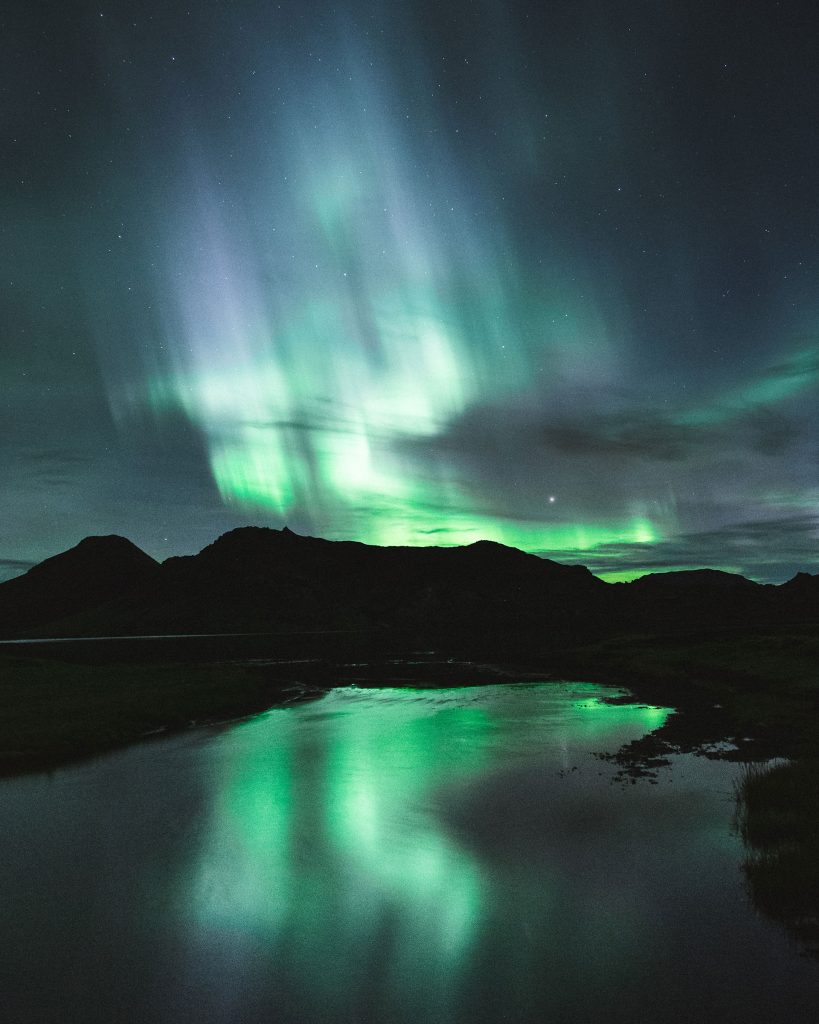
Even with all this knowledge, there might be days when the sky is clear, but the lights just never come. And there could be others when the sky is lit up with the Aurora, but it’s all covered in clouds. There are always exceptions to the rules, and we can’t predict mother nature.
You could even walk out of a restaurant in downtown Reykjavik and see them right above your head, while others could spend weeks in North Iceland waiting in the darkness and never see them. Ultimately, you need some luck, and only Thor and Odin can help with that.
A bit of luck, some strategic planning, and a bit of patience can lead to you an experience of a lifetime. If you get a glimpse of the northern lights or it will definitely be a night you will never forget.
